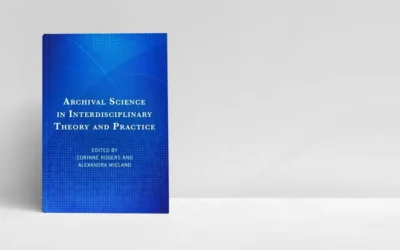How a Collections Management System Acts as a Portal
Margot Note
Archival organizations must continuously evolve to keep pace with the changing information environment. A common way to stay current is to install a collections management system (CMS).
Because of developments in information technology, archival repositories should strive to extend their automated services to serve their users better and focus on more complex tasks. Over the years, archives may have developed several systems to manage information and provide assistance. The methods may have different demands, technical debt, and cumbersome workarounds. Doing the everyday work of maintaining an archives becomes laborious and frustrating without time to step back and strategize about improving how systems can work together. With the increasing use of the Internet and the trend of integrated applications, archivists may seek to incorporate various systems in their organization to provide a single operations interface for users.
Easy Application
One of the many reasons for an archival repository to install a CMS is its ease of use. When patrons encounter online archives, they expect seamless and integrated access to a wide range of digital collections and resources through a standard interface. Portals can deliver archival materials, finding aids, and related resources to users, facilitating information discovery. They provide access to various useful resources via one page, helping users avoid becoming overwhelmed or lost. Collection management systems can embed portal services in environments familiar to the user, such as an institutional website. The portal can match the site’s look and feel, so delivery and display of information is unified.
Instant Delivery
An integrated application includes functions for archival description, accessioning and de-accessioning, controlled vocabularies, custodial management, research request tracking, and other workflow functions. Archivists can quickly deliver updated information about the collections’ activities over the web. They can provide online access to the records they choose to publish on the Internet, the Intranet, desktop computers, in-house kiosks, and mobile devices. An integrated portal of archival materials allows archivists to update public access instantly when making changes behind the scenes. The view that users see is always current.
For users, a portal is defined as a personalized, single point of access where users conduct searches across a range of heterogeneous network services, local and remote, structured and unstructured. The user views the amalgamated results. Portals support the user in resource discovery, learning, and research. Information may also be presented via other means through a portal, such as research services, reference tools, and other learning materials. A portal builds a community by sharing resources of common interest.
Gathering Information in One Place
Although differences exist between the various products and services that call themselves portals, most feature the power of bringing information from many places together, whether the information is locally held or distributed. An archives can gather content from diverse distributed resources using strategies such as crosssearching, harvesting, and alerting, and collate the results. Presentation is usually via the web; though other means of access are possible.
Limiting Information Overload
Users of holdings managed by a great CMS find what they need to know quickly through an intuitive interface, global searching, and convenient record sorting, grouping, and filtering. Integrated portals of archival materials allow users to have one-stop shopping for their research needs. The challenge, then, is balancing the information offered against the amount of information a user can understand without getting overwhelmed. If a portal attempts to provide a lot of data and many functionalities, users may feel that too much is on one screen, and there are too many resources to choose from. A robust CMS with a well-designed public interface allows patrons to access the right information in a suitable amount.
Margot Note
Margot Note, archivist, consultant, and author is a guest blogger for Lucidea, provider of ArchivEra, archival collections management software for today’s challenges and tomorrow’s opportunities. Read more of Margot’s posts, and register here for her upcoming webinar, “CMS Essentials for Success #2: Integrated Portal” on February 17, 2021.
Similar Posts
Ensuring Long-Term Access to Digital Archives
Long-term preservation is essential to ensure digital archives remain accessible and usable.
5 Best Practices for Personal Digital Archiving
Archivists have developed best practices for organizing and maintaining personal digital archives, safeguarding digital legacies for future generations.
Interview with the Editors: Wieland and Rogers on Interdisciplinary Archival Science
Alexandra Wieland and Corinne Rogers co-edited Archival Science in Interdisciplinary Theory and Practice. My interview with them is below.
The Importance of Personal Digital Archiving (Plus Steps to Get Started)
Archivists often help individuals manage and preserve digital files of personal significance.




Leave a Comment
Comments are reviewed and must adhere to our comments policy.
0 Comments